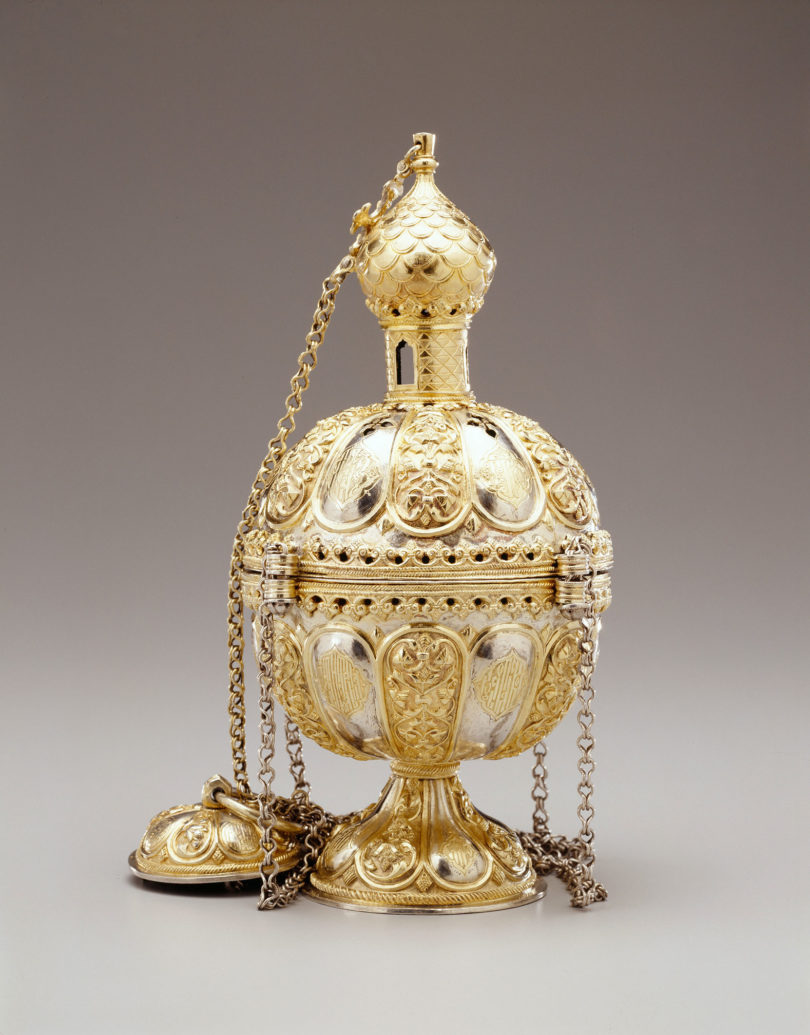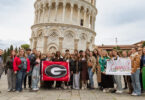Athens, Ga. – The Georgia Museum of Art at the University of Georgia will present the exhibition “Exuberance of Meaning: The Art Patronage of Catherine the Great” Sept. 21-Jan. 5. This exhibition features works of decorative art the Russian empress Catherine the Great commissioned for her own use or as gifts for courtiers, including a large chalice created by noted goldsmith Iver Winfeldt Buch.
The Buch chalice, which belongs to Hillwood Museum and Gardens in Washington, D.C., serves as the centerpiece of the exhibition. Adorned with precious gems and eight carved cameos, it demonstrates how Catherine combined Byzantine and classical influences. Other objects in the exhibition represent major currents in 17th- and 18th-century Russian art.
Asen Kirin, associate professor of art and associate director of UGA’s Lamar Dodd School of Art, is curator of this exhibition, which borrows objects from the Metropolitan Museum of Art, the Chipstone Foundation, the Walters Museum and private collections, as well as Hillwood Museum.
The exhibition features pieces purchased in Russia in the 1930s by Marjorie Merriweather Post, the sole heir to the multimillion-dollar Post Cereal Company. Post’s purchases formed Hillwood’s Russian collection.
Kirin said the exhibition contemplates “the art collections of two extraordinary women, who lived at different times and could not have come from more dissimilar environments. One is Europe’s Old Regime of absolute hereditary monarchies, the other—the modern, industrialized America of free enterprise.”
The exhibition looks at how the arts enabled the women to present themselves to society and to control the perception of their images, Kirin said.
The exhibition presents a comparison of objects that exemplify both medieval Byzantine culture and the Western, neoclassical style that was the hallmark of the Enlightenment. It focuses on how Catherine applied her knowledge of ancient and medieval glyptic art and incorporated her collection of carved gems in the commission of new works of art, a continuation of the centuries-old tradition of placing pagan, Greek and Roman carved stones onto sacred Christian liturgical and devotional objects.
During her reign, the empress worked to reconcile her contemporary scientific and historical frame of mind with the devotional ways of the Orthodox Church, which had long been sanctified by tradition. The title “Exuberance of Meaning” refers to the crucial characteristic that distinguishes her endeavors in the arts: she conceived her projects in a manner that allowed for multiple complementary interpretations covering a wide spectrum of meanings.
The museum will publish a catalogue to accompany the exhibition, featuring full-page, full-color illustrations of the objects and scholarly essays on Catherine’s art patronage, the Buch chalice and the empress’ proto-feminist use of vessels to make a statement about gender and power.
This exhibition is sponsored by the Samuel H. Kress Foundation, the Frances Wood Wilson Foundation, Mr. and Mrs. James T. Mills Jr., the W. Newton Morris Charitable Foundation and the Friends of the Georgia Museum of Art.
Events associated with the exhibition include films, a Family Day and a two-day symposium scheduled for Nov. 1-2 at the museum featuring noted scholars of Russian art. The museum’s collectors group, an upper-level membership group within the Friends of the Georgia Museum of Art, will host an opening for the exhibition Sept. 21 in conjunction with a concert of music the empress favored at the UGA Performing Arts Center.
Museum Information
Partial support for the exhibitions and programs at the Georgia Museum of Art is provided by the Georgia Council for the Arts through appropriations of the Georgia General Assembly. The council is a partner agency of the National Endowment for the Arts. Individuals, foundations and corporations provide additional museum support through their gifts to the University of Georgia Foundation. The Georgia Museum of Art is located in the Performing and Visual Arts Complex on the East Campus of the University of Georgia. The address is 90 Carlton St., University of Georgia, Athens, Ga. 30602-6719. For more information, including hours, see www.georgiamuseum.org or call 706-542-GMOA (4662).








